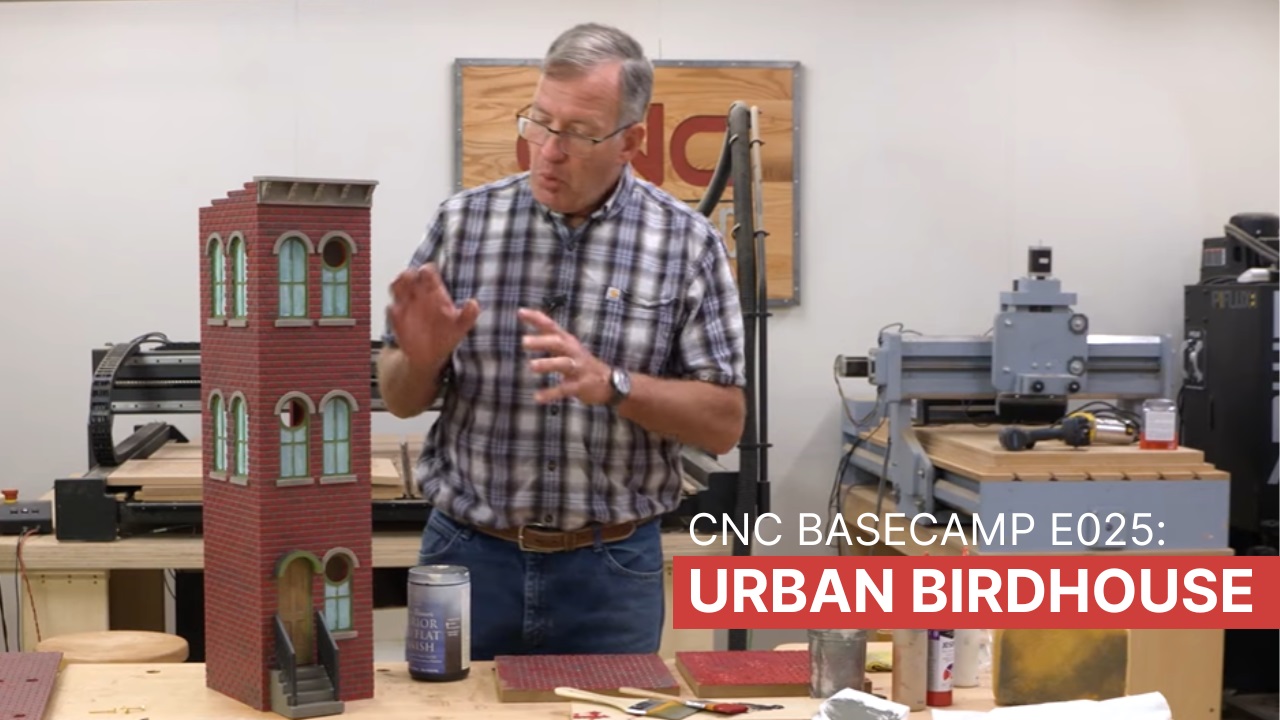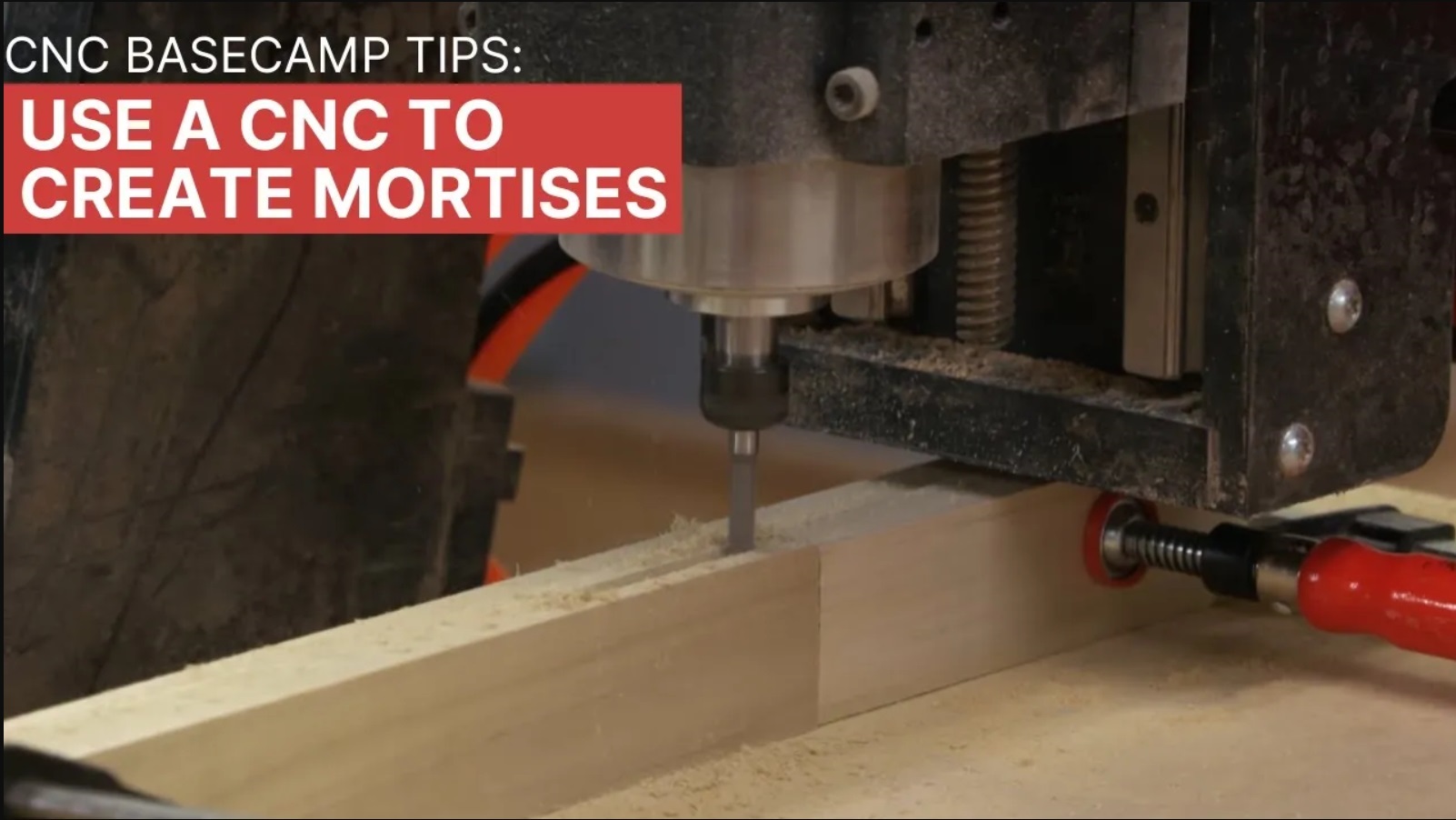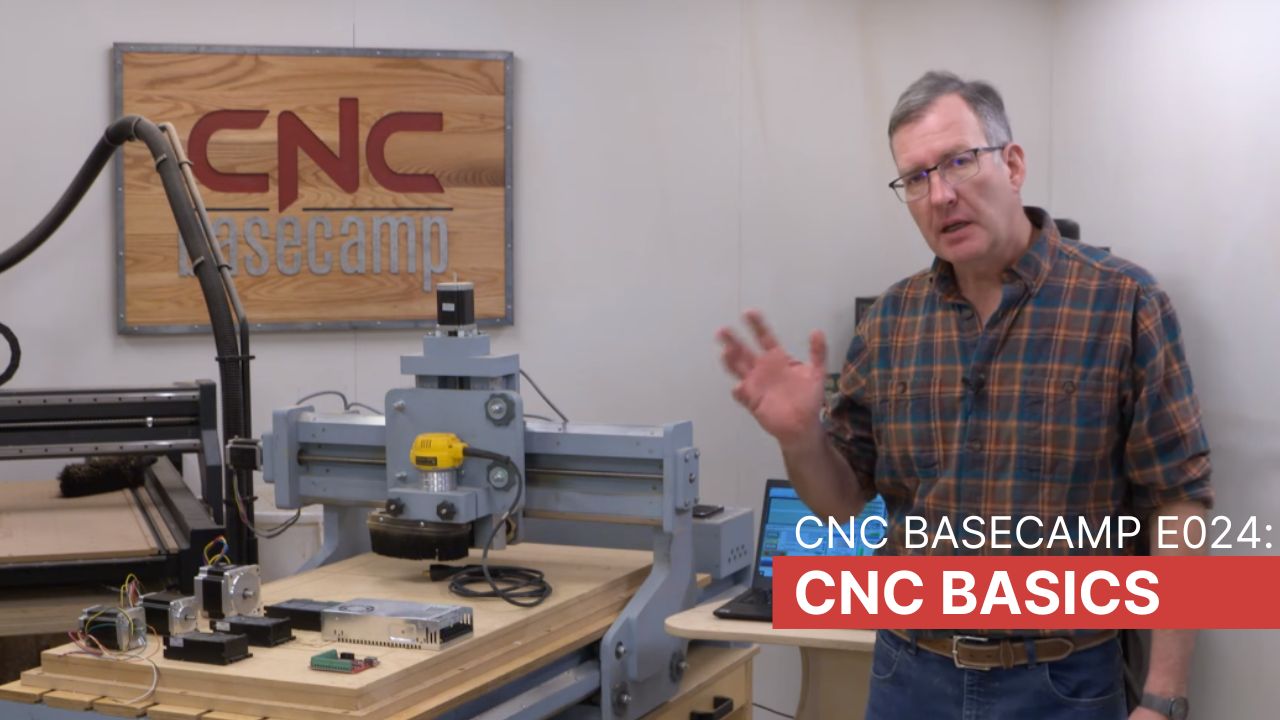A CNC router can machine many materials, but for strength, stability and availability, you can’t beat plywood. Available in many species and cost ranges, it’s a great choice for furniture, accessories or utility projects. Getting quality results working with plywood isn’t hard, but it does call for the right bit, the right speed and feed, and a little care.
Let’s start with the bits. There are 4 different types of straight bits that can be used for cutting plywood, each with distinct advantages.
 Straight bit: This rugged bit is a great all-around performer. Its geometry is neutral, with the cutting edge striking the workpiece straight on – not lifting up or pushing down on the veneer. The result is a good cut on the top and the bottom of the plywood with little tear out. The straight bit is a good choice if you have a variety of cutting operations and want to stick with one bit. The straight bit won’t be of much help lifting the chips out of the cut, so good dust collection and a moderate speed are called for.
Straight bit: This rugged bit is a great all-around performer. Its geometry is neutral, with the cutting edge striking the workpiece straight on – not lifting up or pushing down on the veneer. The result is a good cut on the top and the bottom of the plywood with little tear out. The straight bit is a good choice if you have a variety of cutting operations and want to stick with one bit. The straight bit won’t be of much help lifting the chips out of the cut, so good dust collection and a moderate speed are called for.
 Upcut bit: A standard in most shops for all sorts of cutting operations in solid wood, this bit has a spiral geometry. The aggressive qualities of the upcut bit can leave a rough edge, tearing and chipping the top veneer layer with its upward shearing cut. The lower veneer layer fairs much better. The cutting action efficiently clears chips out of the kerf, so if it’s speed you’re after, this is the bit to use.
Upcut bit: A standard in most shops for all sorts of cutting operations in solid wood, this bit has a spiral geometry. The aggressive qualities of the upcut bit can leave a rough edge, tearing and chipping the top veneer layer with its upward shearing cut. The lower veneer layer fairs much better. The cutting action efficiently clears chips out of the kerf, so if it’s speed you’re after, this is the bit to use.
 Downcut bit: This bit has the direction of the spiral cutting edge reversed from the upcut. In use the downcut bit has a shearing action that pushes down on the top veneer layer and produces exceptionally clean cuts topside. This is the bit to use for all pocket cutting operations. The cut quality suffers a little on the bottom face of the plywood as the shearing action is reversed. This bit struggles to clear chips so a slower feed rate and more attention to dust collection and potential burning is required.
Downcut bit: This bit has the direction of the spiral cutting edge reversed from the upcut. In use the downcut bit has a shearing action that pushes down on the top veneer layer and produces exceptionally clean cuts topside. This is the bit to use for all pocket cutting operations. The cut quality suffers a little on the bottom face of the plywood as the shearing action is reversed. This bit struggles to clear chips so a slower feed rate and more attention to dust collection and potential burning is required.
 Compression bit: Truly unique, this bit that is an upcut bit for the first 3/32” and a downcut bit for the rest of the it’s cutting length. The compression bit is designed for sheet goods, so as you might guess the combination will produce a high quality on both the top and bottom veneer layers of plywood. Just remember that to achieve the compression bit’s good results on both layers of the plywood, the bit needs to begin cutting past the depth of the upcut geometry. That means the depth of cut must be at least 3/16”. Chip clearance is good, so a solid feed rate can be maintained. The compression bit is a winner for through cutting operations.
Compression bit: Truly unique, this bit that is an upcut bit for the first 3/32” and a downcut bit for the rest of the it’s cutting length. The compression bit is designed for sheet goods, so as you might guess the combination will produce a high quality on both the top and bottom veneer layers of plywood. Just remember that to achieve the compression bit’s good results on both layers of the plywood, the bit needs to begin cutting past the depth of the upcut geometry. That means the depth of cut must be at least 3/16”. Chip clearance is good, so a solid feed rate can be maintained. The compression bit is a winner for through cutting operations.
So what feed and speed should you use? That will depend on the material that you are cutting and your router. The goal is a speed which produces large chips. Large chips mean that the bit is cutting efficiently. Efficient cutting not only means productivity, but also that the bit will run cooler and therefore last longer. A good place to start is with a speed of about 17500 RPM. If you’re cutting ¾ plywood a feedrate of 50 ipm is good for the downcut bit as it can’t clear chips out of the kerf very well. The straight bit and compression bit, can move a little faster at 60ipm. The upcut is cleared for a feed of 75ipm. These are just suggested starting points. Test your cuts and your good judgement will determine the final feed rate and speed.
A few last pointers. If you’re making through cuts, check to be sure that your workpiece is making full contact with the spoilboard underneath. Orienting bowed stock downward and using a new or resurfaced spoilboard will help. Finally, good machine maintenance and sharp, clean bits go a long way towards a good cut.












